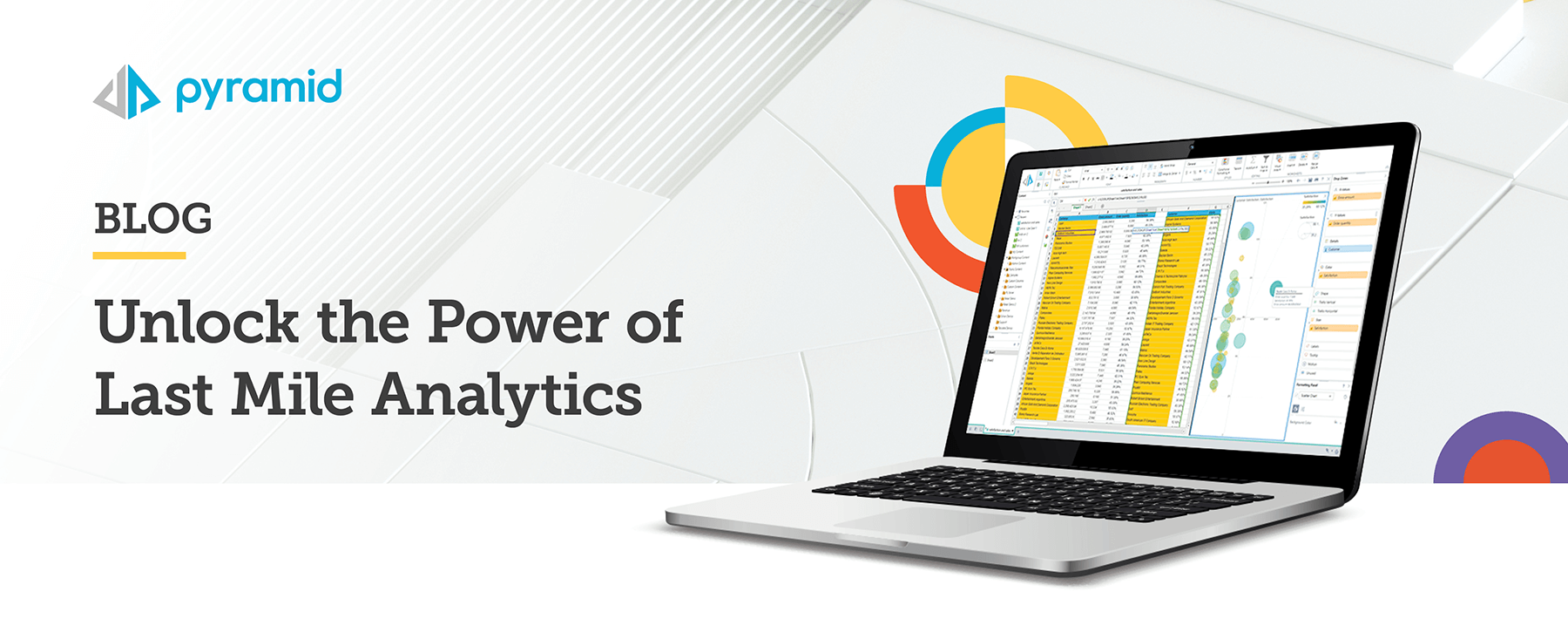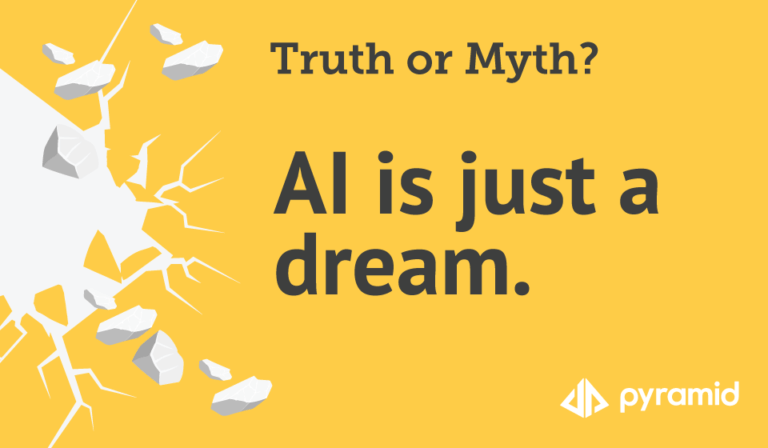Organizations that use analytics often experience a gap between analytics results—the products of data preparation, discovery, and presentation—and human decisions that impact the organization. Lost opportunities and costly errors are common within this gap, where business decision-makers may lack context, data literacy, or even consistency with analytics results.
Per research from ESG, 87% of organizations say they are still exporting data to spreadsheets, a telltale sign that best practices around data-driven decision-making frequently fall apart in the “last mile.”
Fortunately, the right analytics capabilities can bridge that gap. They can connect valuable organizational data to tangible business outcomes, potentially solving many business challenges. This article provides a comprehensive overview of analytics in the last mile and looks at how this type of advanced analytics is already transforming business operations.
What is last-mile analytics?
It is the point in the analytics lifecycle where analysts have already completed data preparation and analysis; now, line-of-business workers must use the results to make more informed business decisions.
When integrated into this “last mile” of business decision-making, analytics can help nontechnical team members understand data in a way that improves their decisions and work outcomes. This process may include advanced decision modeling capabilities, where data and business personnel can carry out the entire analytics lifecycle within a single, streamlined environment.
The importance of last-mile analytics in business
Compared to traditional BI solutions, last-mile analytics marries analytics outputs more directly and meaningfully with business decisions. For example, Pyramid Analytics solves the last-mile issue by including business and decision-modeling functions within the platform. By connecting analytics and quality decision-making, organizations can improve their operational efficiency, reduce costs, and grow revenues, among other potential benefits.
Learn more about last-mile analytics and the power of decision intelligence.
The key components of last-mile analytics
Here, we identify seven key components of an advanced analytics solution that address the last mile. The number of components will vary from one organization to the next. However, as the integration of GenAI becomes more common in analytics tools, each component will grow more accessible to a wider variety of organizations and professionals.
1. Data collection and integration
Data teams must combine data from disparate sources, including internal and external systems. This process may encompass a combination of structured, semi-structured, and unstructured datasets. This step is essential for any business analytics project because it forms the foundation for all subsequent insights.
2. Data preparation and cleansing
Once the data has been collected, teams must ensure it is properly formatted and structured. This process could include cleaning the data to eliminate redundant fields, normalizing values, and filling in any missing information. Team members can automate many of these data preparation tasks by employing AI techniques.
3. Data discovery and exploration
Data exploration involves uncovering patterns and trends within the dataset that may be impossible to detect with manual methods. Machine learning techniques can help speed up this process while also increasing the accuracy and efficacy of the results.
4. Predictive analytics
Predictive analytics uses data to predict future trends, customer behavior, and other dynamics. By applying predictive analytics techniques, organizations can become proactive rather than reactive in their decision-making. In this way, we can differentiate predictive analytics from descriptive and diagnostic analytics, which only describe events or identify the causes of events, respectively.
5. Data visualization and reporting
Data analysts can share their results by delivering data analytics in visually appealing and easy-to-understand formats. Data visualization uses such techniques as charts, graphs, and self-service tools within custom dashboards to help present complex information intuitively, supporting better business decisions at any level of the organization.
6. Natural language processing (NLP)
Analysts can use natural language processing (NLP) to produce meaningful insights from unstructured data sources, such as customer reviews and survey responses. AI-powered NLP models can analyze sentiment, extract entities, perform topic modeling, and enable text-based analytics to deliver those insights. Advanced analytics tools may also use NLP to “understand” personnel’s natural-language requests for real-time insights.
7. Automation and decision support
AI can automate routine decision-making processes by applying predefined rules or learning from historical data. Or consider Pyramid Analytics’ Tabulate and Solve applications for business and decision modeling. Its spreadsheet-like tools feature prescriptive capabilities that connect to the same data and analytic components other team members have already curated and produced. These tools can include visualizations, dashboards, formulas, and business logic, among other assets. In this way, organizations can use business and decision modeling to help business decision-makers leverage data quickly but meaningfully.
Sign up for our webinar on last-mile analytics.
The key benefits of last-mile analytics
The valuable insights last mile analytics provides can drive success and growth for all types of organizations. Here is a closer look at some of the benefits advanced analytics tools featuring last-mile capabilities can provide.
Improved decision-making
Insights from last-mile analytics can help decision-makers at all levels of an organization identify opportunities, address challenges, and optimize business processes. Because analytics in the last mile leverages data through self-service and AI techniques, business personnel can access real-time data-driven insights. Eliminating manual processes from decision-making can reduce human bias and errors while promoting more consistent, reliable outcomes.
Enhanced operational efficiency
Decision-makers can optimize processes, improve resource allocation, and identify other opportunities for operational improvements. In these ways, analytics can be foundational to organizations’ successful digital transformation—it allows for the real-time analysis of operational data and unique, collaborative analytics environments among teams.
Proactive problem identification
AI-powered analytics models can detect anomalies, patterns, and trends that may indicate potential issues. Following discovering these insights, teams can develop strategies to mitigate threats and increase organizational resilience. This proactive approach helps organizations avoid potential issues before they become more serious problems.
Enhanced customer experiences
Businesses can segment their customer base by analyzing customer data, identifying customer preferences, and anticipating their needs. With the insights from analytics, some organizations may also create more personalized experiences that engage customers and boost loyalty.
Competitive advantages
Any number of nontechnical personnel can uncover hidden patterns and trends, enabling them to make strategic decisions in their individual roles. This contrasts with competitors’ analytics tools, which may only serve a small number of technical employees. Last-mile analytics may also help teams develop and deploy new products or services quickly, significantly reducing time-to-market.
Scalability and flexibility
AI models can process and analyze vast amounts of data more efficiently than traditional methods, allowing businesses to leverage data from diverse sources. This provides organizations the scalability and flexibility to quickly adapt to changing market conditions, even in the last mile.
The future of last mile analytics
Already, organizations are using last-mile analytics to optimize their operations. One retailer deployed advanced analytics across its departments and 60 million customers, “bridging the ‘last mile,’ or delivering the right insights to the right people at the right time in a way that informs their decision making to drive better business outcomes,” as McKinsey describes. As last-mile analytics continues to drive business advantages, organizations should consider how to use the technology.
Leverage last mile analytics via Pyramid’s Decision Intelligence Platform
Discover how the Pyramid Analytics Decision Intelligence platform applies to all stages of business decision-making, including the last mile. With its new and unique generative AI features, organizations of all types have greater access and sophistication in their decision support. Request a free, personalized demonstration today.












